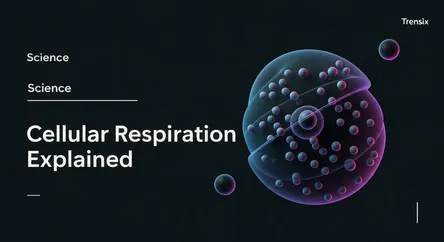Science
Cellular Respiration Explained

Explore cellular respiration, the essential process where cells convert nutrients into ATP, the energy currency that powers all forms of life.
What is it?
Cellular respiration is a fundamental metabolic process occurring in the cells of organisms to convert biochemical energy from nutrients into adenosine triphosphate (ATP), and then release waste products. It's the way living things generate usable energy to power cellular activities. The process primarily involves the breakdown of glucose in the presence of oxygen. The main stages include glycolysis, the Krebs cycle (or citric acid cycle), and oxidative phosphorylation, which takes place mostly within the mitochondria, often called the 'powerhouse' of the cell. The overall reaction is essentially the reverse of photosynthesis.
Why is it trending?
As a core concept in biology, cellular respiration is always relevant in education and research. Interest surges with new discoveries in metabolic science, particularly concerning diseases like cancer, diabetes, and neurodegenerative disorders, which are often linked to mitochondrial dysfunction. Furthermore, the growing wellness and biohacking communities are increasingly focused on optimizing cellular energy through diet, supplements, and exercise, bringing this complex biological process into mainstream discussions about health, aging, and peak performance.
How does it affect people?
Cellular respiration is the engine that powers every aspect of human life, from muscle contractions and nerve impulses to cell growth and repair. A healthy respiratory process is vital for overall well-being and energy levels. When this process is impaired, it can lead to fatigue and is a contributing factor in numerous diseases. Understanding how factors like diet and exercise influence cellular respiration allows individuals to make informed choices to improve their metabolic health, enhance physical performance, and potentially reduce the risk of chronic illnesses.